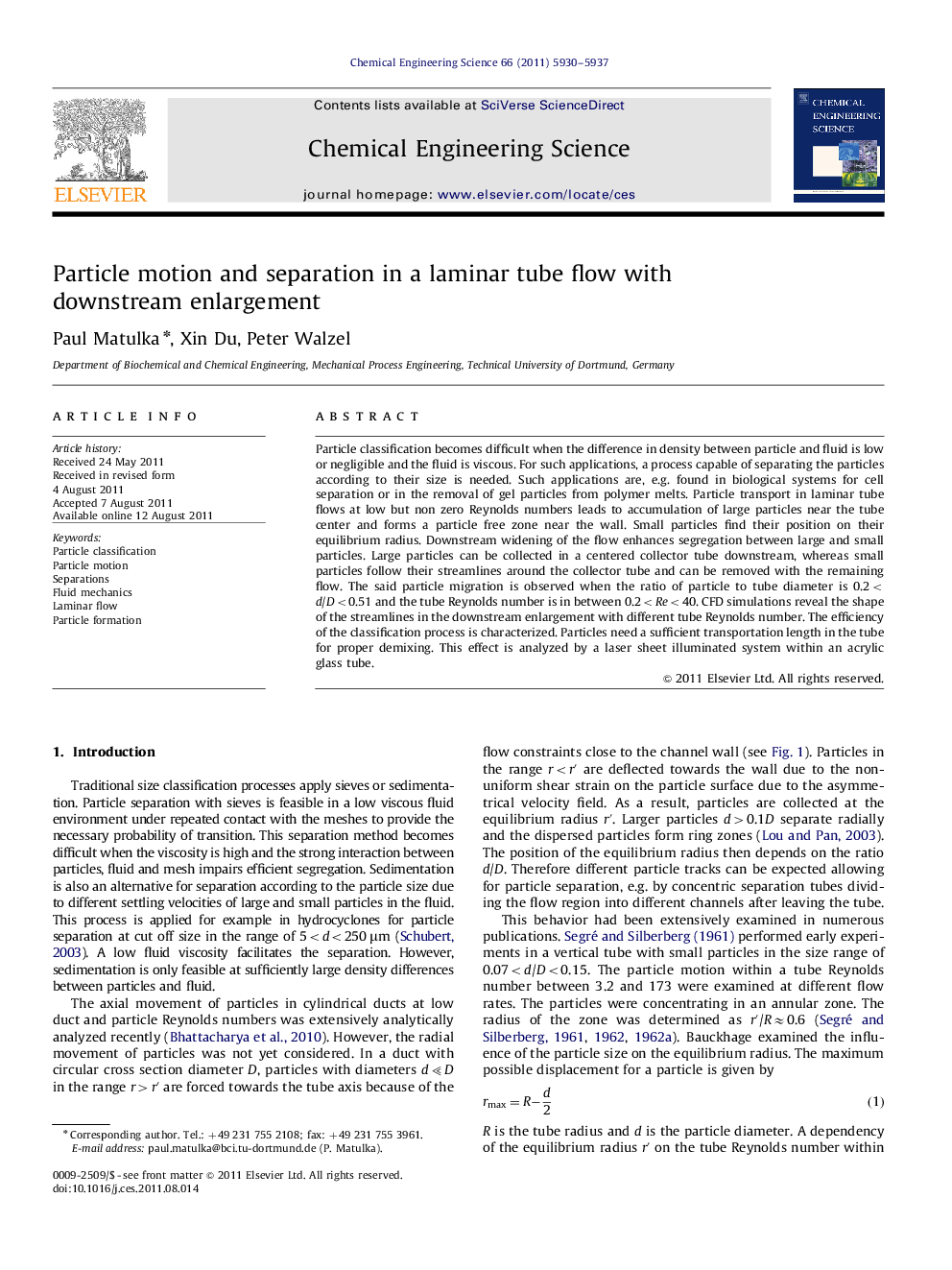| Article ID | Journal | Published Year | Pages | File Type |
|---|---|---|---|---|
| 156041 | Chemical Engineering Science | 2011 | 8 Pages |
Particle classification becomes difficult when the difference in density between particle and fluid is low or negligible and the fluid is viscous. For such applications, a process capable of separating the particles according to their size is needed. Such applications are, e.g. found in biological systems for cell separation or in the removal of gel particles from polymer melts. Particle transport in laminar tube flows at low but non zero Reynolds numbers leads to accumulation of large particles near the tube center and forms a particle free zone near the wall. Small particles find their position on their equilibrium radius. Downstream widening of the flow enhances segregation between large and small particles. Large particles can be collected in a centered collector tube downstream, whereas small particles follow their streamlines around the collector tube and can be removed with the remaining flow. The said particle migration is observed when the ratio of particle to tube diameter is 0.2 ► Particles can be classified downstream a laminar tube flow based on size selective trajectories. ► Large particles are collected in a centered collector tube, and small particles move around this tube. ► Classification is effective at low concentrations in the tube Reynolds number range 1
